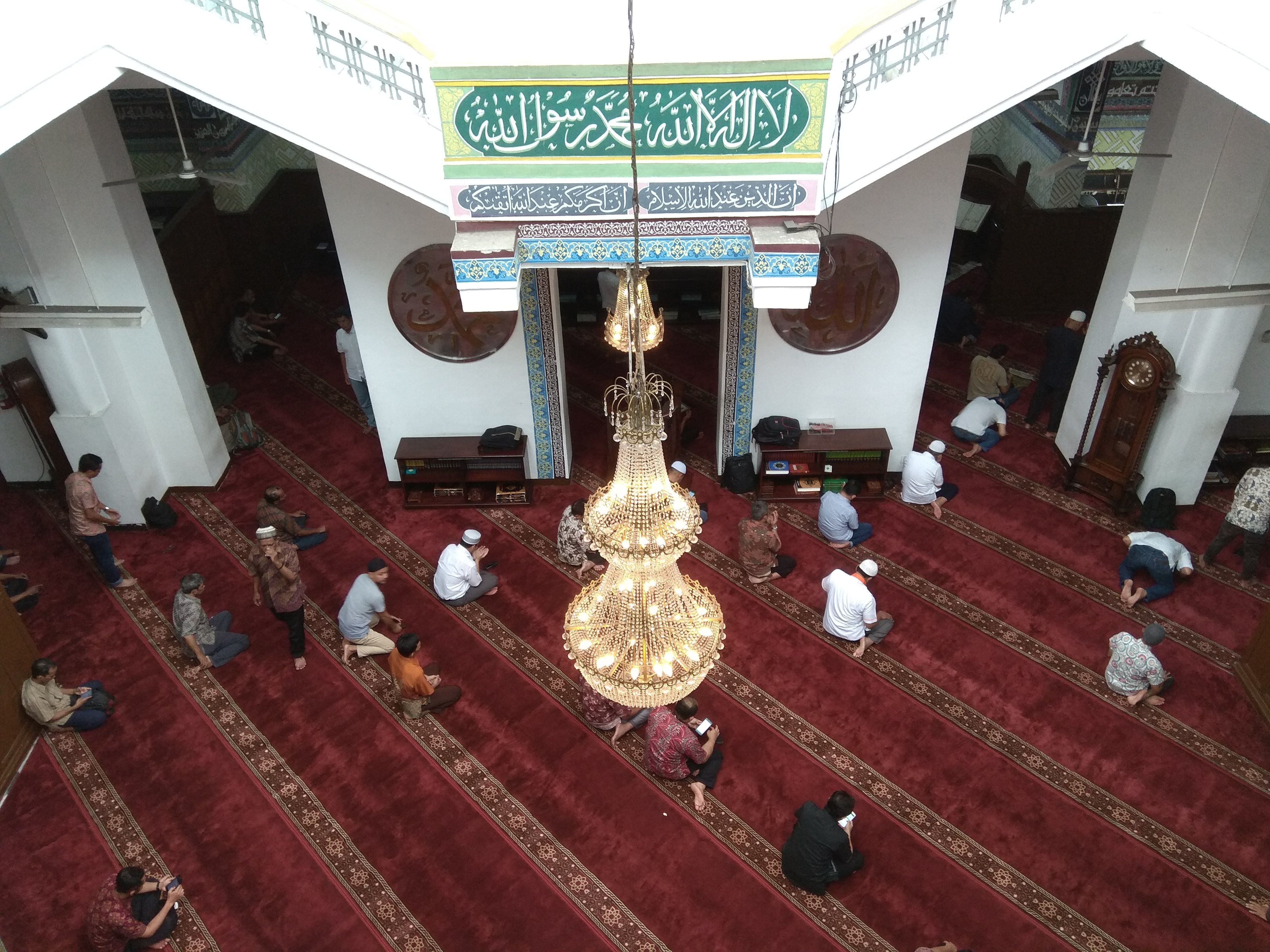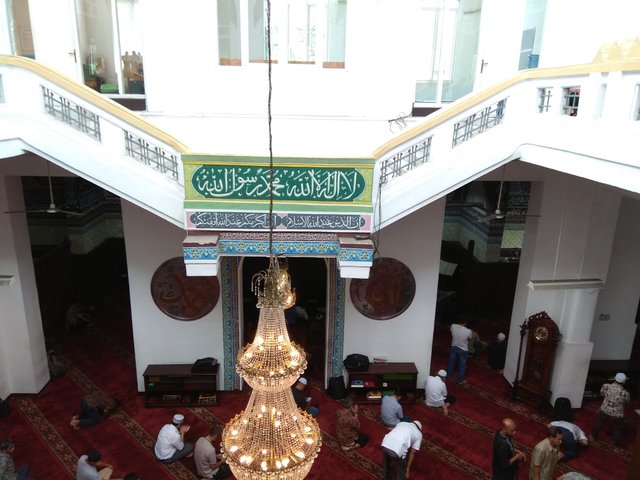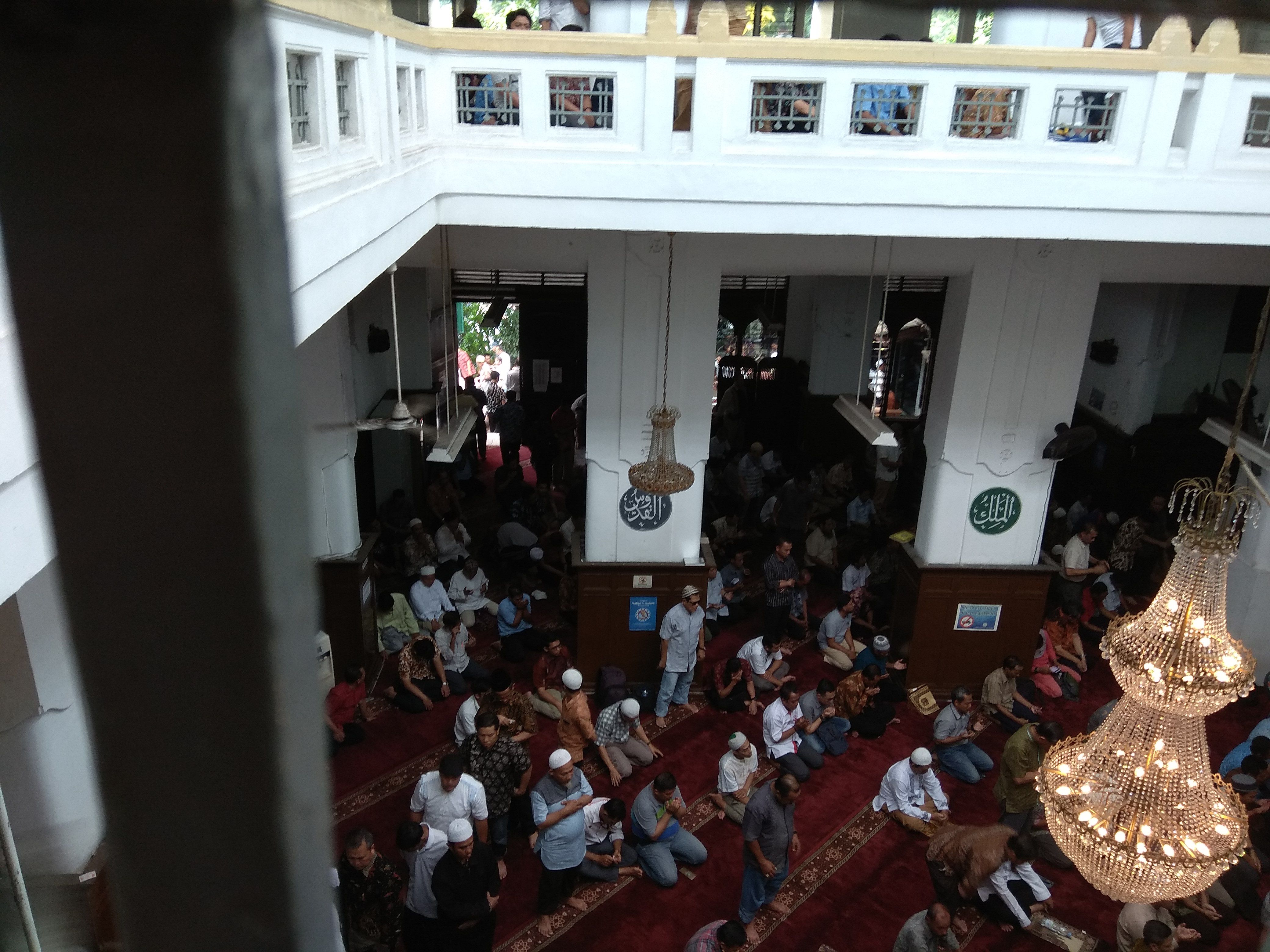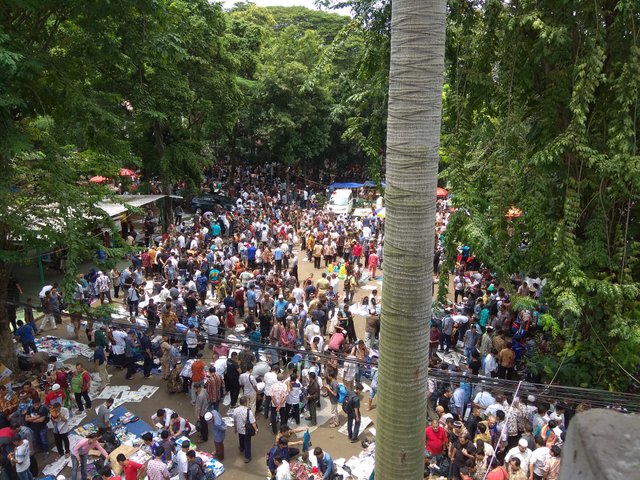Es gibt eine Moschee in der Nähe von meinem Mithaus in Menteng. Die Moschee heiß Mesjid Cut Meutia. Weil ich aus Aceh komme, ist der Name sehr familiar für mich. Die ist der Name einer bekannter Heldin von Aceh. Diese Moschee war die erste Moschee, die ich gefunden habe in Jakarta. Manchmal denke ich, weil die Mosche diesen Name benutzt. Hier möchte ich einige Dinge über der Mosche für euch berichten. Obwohl ich die A1 Prüfung im Goethe Institut letzten Donnerstag (22. März 2018) gemacht habe, ist mein Deutsch immer noch schlecht. Deswegen will ich die Berichtung auf Englisch prezentieren.

Situated literally adjacent to my rented accommodation, Cut Meutia mosque is the most frequent mosque I visit to perform my shalahs. I have no idea why the mosque carries the name of a renowned heroine of my fatherland. I suppose that the people around the mosque may know that Cut Meutia is an Acehnese since she and other heroines of Aceh did garner world attention towards their valour and bravery against Dutch annexation. Let me tell you briefly who Cut Meutia really is.

She was born in 1870 in Keureutoe Pirak Timu, North Aceh. Being a student of a religious scholar, Tgk Chik Paya Bakong, she learned that to fight against the Dutch infidels is a calling. She was ever married to Pang Nanggroe, a hero from Lhoksukon who finally died as a martyr. Past the death of Pang Nanggroe, she got married for the second time to Tgk Chik Ditunong whose real name is Tgk Chik Muhammad. From my uncle, I heard some about Tgk Chik Ditunong. Initially, in a village called Tanah Pasir lived he with a brother who allegedly chose to stand on the Dutch side, it was a betrayal. Tgk Chik Ditunong chose to exile himself heading in the south direction from his village until he arrived at Pirak. The word ‘south’ means in Acehnese ‘tunong’, hence the name of Tgk Chik. The journey of Tgk Chik Ditunong ended after he was captured by the Dutch and brought to receive his death sentence in Lhokseumawe, the land in which I was born. The execution took place on a shore facing the Malacca Strait in Kampung Jawa. I believe not many know this tiny part of history. Cut Meutia herself was a martyr when a bullet of the Dutch militaries struck her chest by the Peutoe river in Pirak. My uncle also mentioned that our ancestors joined the troops of Cut Meutia at that time. Not like the majority of other national heroes who lied in rest in an accessible graveyard, Cut Meutia was buried in the midst of thick jungle in North Aceh. As a welcome, there is only a wall in the premises of the cemetery saying Pemerintah Aceh Dinas Sosial Aceh: Makam Pahlawan Nasional Cut Meutia. However, perilous tracks leading to the location normally thwart the visitors’ efforts to come. To keep Cut Meutia’s epic memory, her name is perpetuated in some sites. For example, streets bearing her name lie in Banda Aceh, Lhokseumawe, Medan, Jakarta, Bekasi, and Samarinda. In Lhokseumawe is found Cut Meutia Hospital. In Banda Aceh is situated Cut Meutia Senior High School. Besides these, the name is also seen in other spots across the archipelago of Indonesia, one of which, Cut Meutia Mosque Menteng.
The location of the mosque can be found adjacent to Gondandia train station. it is a very busy area during working hours, especially in the morning. The mosque always collects a huge number of congregation each prayer time. When Maghrib prayer is being performed, I can normally see the row of congregation exceeds the room space until the veranda. In a separated hall room next to the mosque also stand rows of congregation.

It is seen in the picture that the rows of people are not facing straight to the front; rather, they stand diagonally facing the right front side of the mosque. this is due to the building was initially not meant to be a mosque. In 1901, it was built by PAJ Moojen as a Dutch Architect bureau. Afterwards, in 1987, the building was firstly used as a mosque, hence the condition of diagonal prayer rows inside it now.
In the time of Jum’ah prayer, I usually cannot get any vacant space in the mosque room. I always wish I could come earlier yet the German class at Goethe Institut ends at 11.30 while the Azan is raised at 12.05, making me too late for the purpose. Moreover, when the Khatib has stood up on the pulpit, the rows of congregation cover the whole courtyard of the mosque even the park lying right in front of the mosque. Normally, I can join the rows of people sitting on the ground of the park while listening to the khutbah. Vendors selling used newspapers are there around the mosque so that the people who do not get the room inside can buy and use them to cover the ground before spreading the prayer rug on it.
Further, Friday can be said as an occasional market day for the Gondangdia area, hence the phenomenon of vendors selling their things around the mosque. At first, t is was a surprise for me when seeing people eating street food in diners around the mosque when the Khatib was delivering his khutbah. Buying and selling are happening on streets outside the mosque’s premises despite the prohibition of it in The Quran. As the prayer ends, the occasional markets are full of people. So far, I only could get the room inside for the Jum’ah prayer twice. Once when it was on a Friday off because of Chinese new year and the other when I had taken the A1 German examination on the preceding Thursday before the Friday 22 March 2018 marking the starting of the ten-day holiday. Other than these two occasions, I wonder whether I can get free space inside the mosque next Fridays, considering my rented accommodation location which is only 200-metre away from the mosque.

At the moment, I am in Pare East Java, on the last Friday of March 2018, I performed Jumah prayer here today. Shortly, the mosque would always be the most pleasant and cosy place to come in the midst of the hustle and bustle of Jakarta’s life.
Pare Kediri, East Java, 30 March 2018